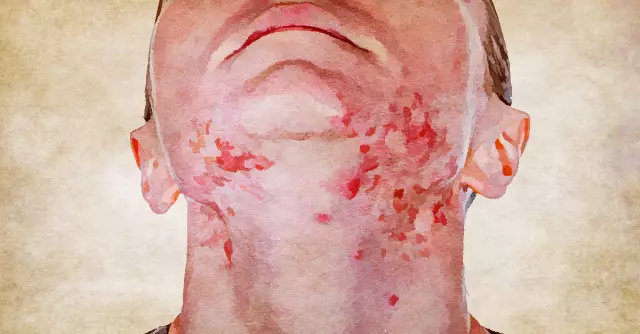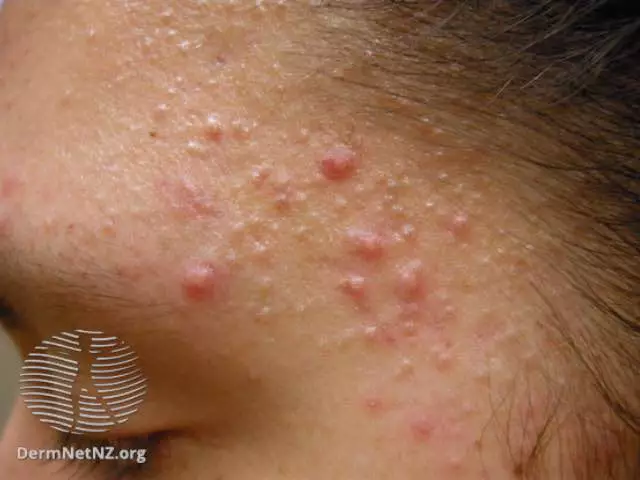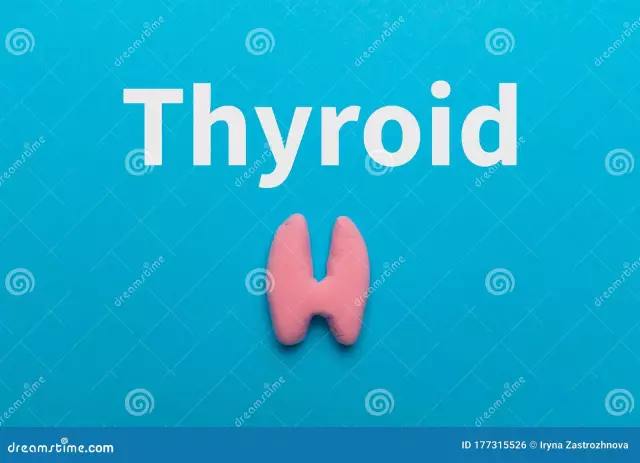- Author Rachel Wainwright [email protected].
- Public 2023-12-15 07:39.
- Last modified 2025-11-02 20:14.
Lacrimal gland
The lacrimal gland is part of the lacrimal apparatus and secretes a tear into the conjunctival sac, from which the lacrimal ducts exit.

The structure of the lacrimal gland
The lacrimal gland has a lobular structure and is a tubular gland located in the frontal bone. In this gland there are 5 to 10 excretory ducts, which pass into the conjunctival sac and secrete tears from the medial angle of the palpebral fissure to the lacrimal lake. Part of the ducts opens into the temporal part of the conjunctiva, and some ducts open near the outer corner of the palpebral fissure into the conjunctival sac.
If a person's eyes are closed, then tears pass along the lacrimal stream in the back edges of the eyelids. Passing through the lacrimal lake, tears flow into pinpoint holes at the medial edges of the eyelids.
The lacrimal sac is an upper duct that is located in the bony fossa, near the orbit. From the walls of this sac, bundles of the lacrimal ducts begin, which pass through the lacrimal tubules.
The tear film has three layers - outer, middle and corneal (next to the cornea). The middle layer is the thickest and is secreted by the lacrimal glands.
The lower part of the lacrimal gland is located under the upper eyelid in the subaponeurotic space. This lower part consists of 25-30 connecting lobules, the ducts of which pass into the main gland.
From the conjunctiva of the lacrimal gland, the palpebral part is separated, which is located in the upper eyelid and can be seen through the conjunctiva.
Lacrimal gland functions
The lacrimal gland has several major protective and nutritional functions:
- tears promote the entry of nutrients into the cornea;
- tears cleanse the eye of foreign objects, dust and various impurities;
- tears help to eliminate "dry eye syndrome", which occurs from eye strain, fatigue and strong visual stress;
- the tear fluid contains useful substances - potassium, chlorine, organic acids, proteins and carbohydrates, lipids and lysozyme.
Tears are often a manifestation of positive or negative emotions, but their release always has a positive effect on the general emotional and mental state of a person.
Abnormalities in the development of the lacrimal gland
The main cause of abnormalities of the lacrimal system is intrauterine trauma. Often, when examining an infant's eye, an ophthalmologist can find several lacrimal openings in the lower eyelid, which open like a tubule and a lacrimal sac. Another most common abnormality is displacement of the lacrimal openings and blockage of the lacrimal gland.
Such congenital anomalies require special ophthalmic procedures. In the event of obstruction of the nasolacrimal canal in newborns, it is better not to carry out operations, since it spontaneously opens within a few weeks.
There are several types of location of the nasolacrimal canal with anomalies of its development. Location options depend on the type of lacrimal canal, changes in the nasal wall and nasal passage.
Lacrimal gland diseases
Diseases of the lacrimal gland can cause damage to the lacrimal apparatus, including the excretory ducts and lacrimal ducts.
Such diseases include:
- dacryoadenitis is an inflammation of the lacrimal gland;
- epiphora is excessive or insufficient production of tear fluid;
- dacryostenosis leads to blockage of the lacrimal gland and inflammation of the lacrimal ducts.
The causes of diseases are congenital pathologies, inflammatory and infectious diseases, trauma and tumors.
Inflammation of the lacrimal gland develops against the background of partitis or other infectious disease, including pneumonia, influenza, typhoid and scarlet fever. Severe inflammation of the lacrimal gland is caused by blood diseases, syphilis and tuberculosis. The symptoms of inflammation are fever, headache, weakness, swelling of the eyelid, inflammation of the mucous membrane of the eye.
When the lacrimal gland is blocked, the lymph bonds increase, and the pain becomes acute and spreads to the temples. The drug treatment of the lacrimal gland includes antibiotics, aminoglycosides and analgesics. With severe edema, antiallergic drugs are prescribed (tavegil, citrine, etc.).
With prolonged narrowing of the lacrimal duct, protrusion of the upper corner of the palpebral fissure and the occurrence of dropsy of the eye sac may occur. Therefore, the process of non-surgical treatment of the lacrimal gland should not be delayed if it does not give a significant result. Delay in the operation can lead to serious complications.
Congenital diseases of the lacrimal gland are hypoplasia, aplasia and hypertrophy. These diseases can be caused by developmental abnormalities, infectious diseases and nerve damage.
The main diseases of the lacrimal duct are dacryocystitis and canaliculitis. Dacryocystitis occurs in newborns and is an inflammation of the lacrimal sac. In the presence of these diseases, in order to restore the normal functioning of the lacrimal apparatus, surgical treatment of the lacrimal gland and lacrimal ducts is performed.
Found a mistake in the text? Select it and press Ctrl + Enter.






